Drip Irrigation: Plan Now for Next Year's Garden Success
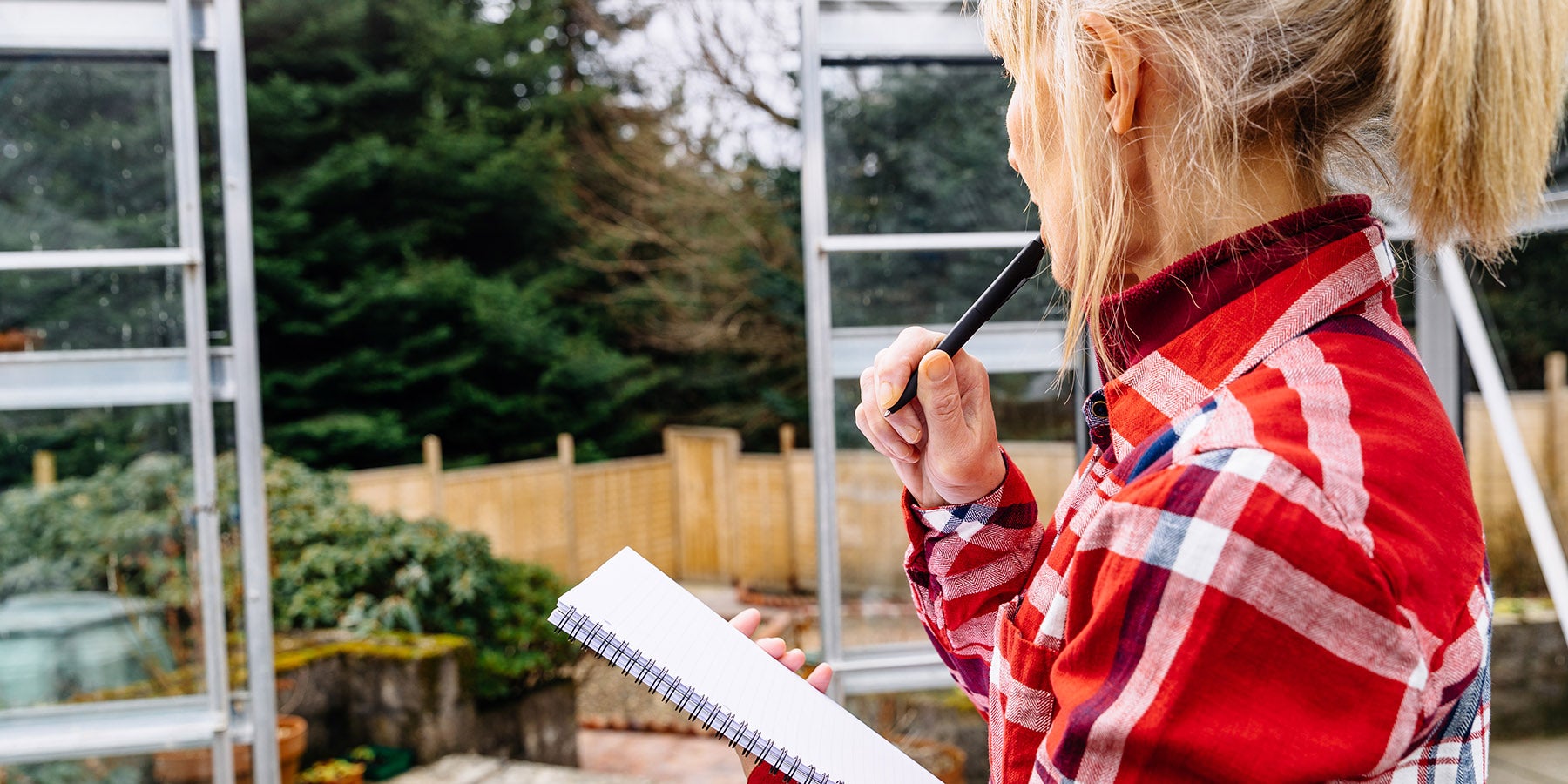
Winter might seem like a time when your garden takes a back seat. But for the savvy gardener, it's the perfect season to put plans in motion for a thriving spring. Imagine setting the stage for your most bountiful garden while cozying up inside. One of the secrets? Drip irrigation. In this article, we explore how to plan your garden and landscape over the winter, using drip irrigation to nurture lush growth.
The Benefits of Planning Your Garden Early
Starting your garden planning in winter isn't just about passing the time until the thaw. By planning early, you allow yourself the luxury of choice and time. You can carefully consider what plant, flower, and vegetable varieties might best suit your vision and prepare for the changes that come with each season. This foresight ensures you’ll be ready to go with the best available options when planting time comes around.
Using Drip Irrigation for Garden Success
Drip irrigation is a great tool for modern gardeners who want the best growing results while saving time and water. You'll find that your plants grow healthier and require less effort to maintain.
Healthier plants are a direct result of consistent and appropriate hydration. With drip irrigation, water is delivered slowly and steadily, ensuring that soil remains moist but not waterlogged. This method mimics natural rainfall patterns, which is ideal for plant growth.
Drip irrigation also aligns with eco-friendly gardening practices. This Intelligent Use of Water™, Rain Bird's guiding philosophy, reduces waste and conserves this precious resource. It's a sustainable approach that benefits your garden and contributes to a larger global effort to protect our planet's finite water supplies.
Planning Your Garden with Drip Irrigation
Winter is an excellent time to plan your garden, research plant varieties, and incorporate drip irrigation into your design. It begins by understanding your garden's unique needs.
Assess Your Garden's Water Needs
Begin by examining your garden's soil, plant varieties, and sun exposure areas. More drippers might be necessary in drier areas, whereas a wetter climate might require fewer. Remember, the goal is to provide just enough water without waste.
Lay Out Your Garden Plan
Measure your garden or landscape area and sketch your layout on graph paper. Identify the locations of the different plantings in your space. Your garden's design will determine the amount and type of drip irrigation equipment you'll need and where it should be placed.
Choose Drip Irrigation Equipment
Select drippers and tubing for your garden's size and shape from Rain Bird's wide array of drip components. Pick components with different flow rates according to plant needs—some plants require more water than others.
Drip irrigation kits are available for small gardens, while bigger gardens might require individually sold components. Some popular options include:
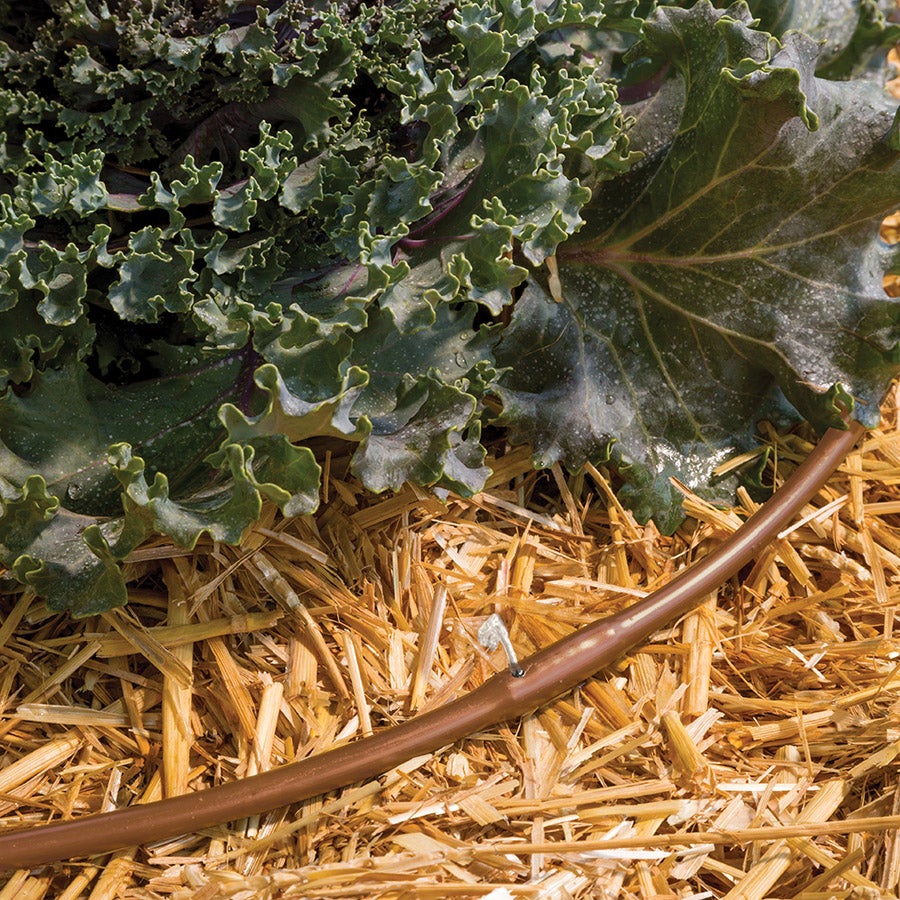
Emitter Tubing
This rugged, flexible tubing is easy to unroll and stake in a garden, flower bed, ground cover, or other landscaped area. With built-in 0.8 gallon per hour emitters spaced 6" apart, Rain Bird's 1/4" Emitter Tubing waters plants evenly from beginning to end of tubing throughout the planting area.
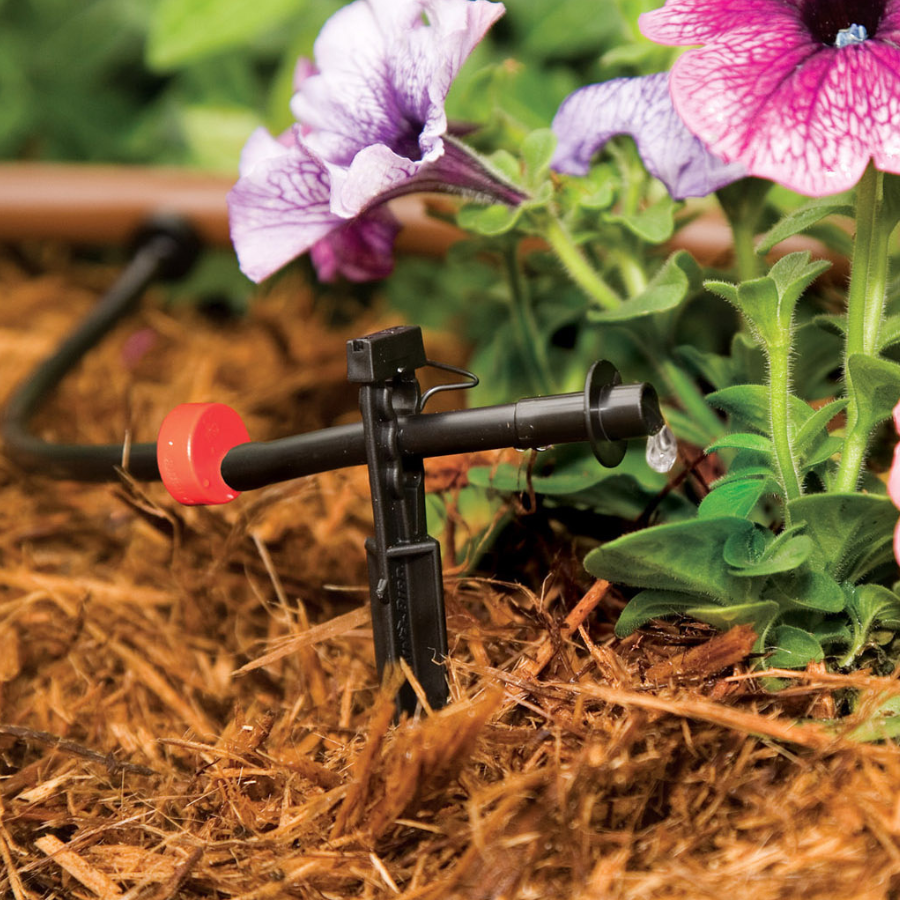
Drippers
Drippers, sometimes called spot-watering emitters, provide a slow drip of water to the base of each plant or cluster of plants. You can also place two drippers in a container if needed to water larger surface areas. Available in 0.5 gallon per hour (GPH), 1 gallon per hour, and 2 gallons per hour (GPH) flow rates.
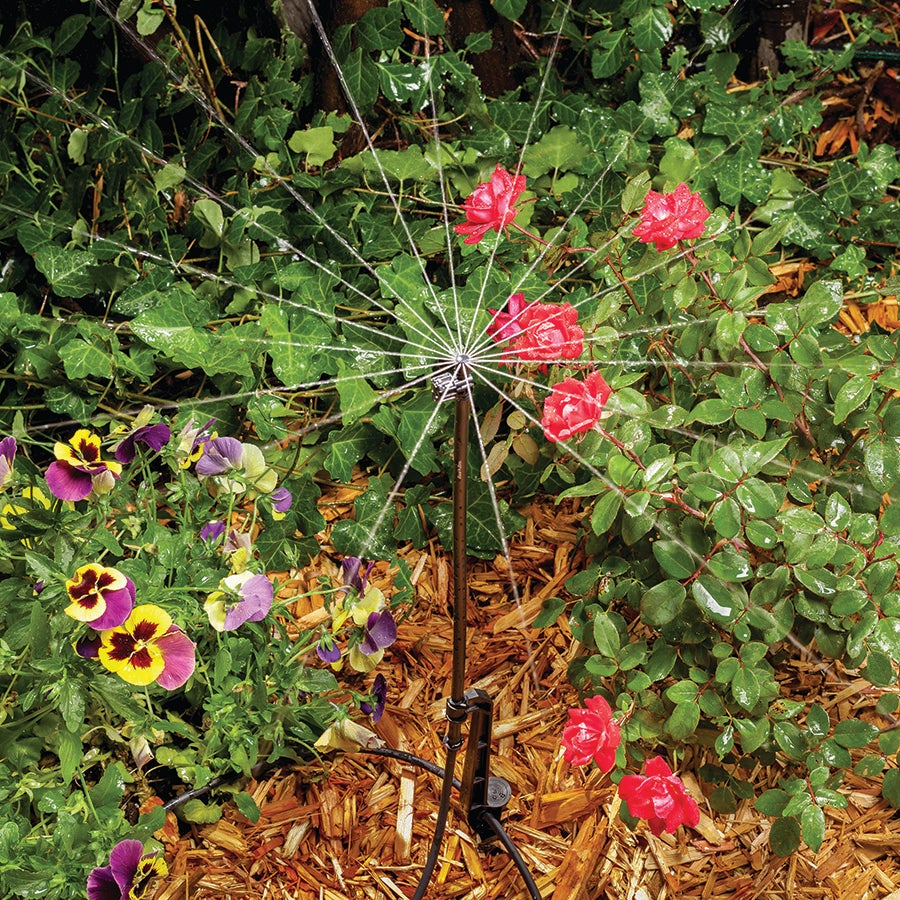
Microsprays
Rain Bird's Drip Microspray is ideal for taller plants such as shrubs and bushes and for use in flower beds and ground cover where you may want broader coverage. Available in full or half circle patterns, these sprays adjusts from 0 to 10 ft. throw, allowing you to water multiple plants or dense plantings.
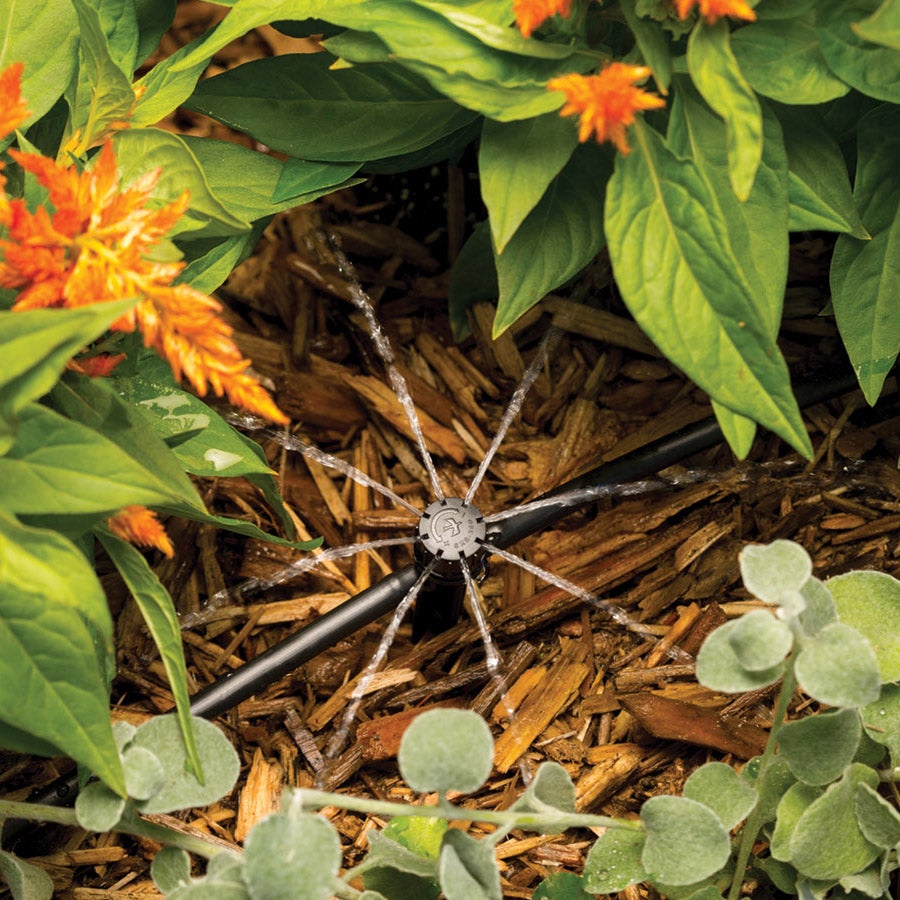
Micro Bubblers
For more precise watering of multiple plantings, Rain Bird's Micro Bubblers are a great solution for shrubs, trees, and flower beds. Easily adjust the spray distance from 0 to 3 ft. and flow rate from 0 to 13 gallons per hour at 30 PSI by simply twisting the cap.

Timer
Attach a timer to automatically schedule your watering times. Rain Bird Electronic Garden Hose Watering Timer connects easily to your drip irrigation system to make your watering schedule more convenient without worrying about over or under-watering.
Install the System and Test for Efficiency
With your plan in place, you'll be ready to install your garden in the Spring. When planting day arrives, lay out your tubing and attach drippers according to your plan. Then, secure everything in place and connect to a water source. Test the system to ensure proper water flow and adjust as needed to cover all plants evenly. A well-installed system should require minimal adjustments once set.
Be Flexible
Lastly, don't overlook the importance of flexibility. Gardens change over time, and so should your irrigation system. Design with adjustments in mind—a modular setup allows you to tweak as needed without a complete overhaul.
Additional Winter Planning Tips for Gardeners
Winter is also an excellent time for soil preparation and amendment. Consider testing your soil's pH and nutrient levels and add any necessary amendments to improve fertility. Healthy soil is the foundation of a bountiful garden.
Planning crop rotations and companion planting during winter can yield significant benefits. Rotating crops prevents nutrient depletion and reduces pest buildup, while companion planting can enhance growth and flavor profiles.
Finally, take this time to reflect on past gardening successes and challenges. Learning from experience is invaluable, allowing you to refine your strategies and set new goals for the coming growing season.
Your beautiful garden is as much about planning as it is about nurturing. By using the winter months to plan your garden, incorporating drip irrigation, and following the tips outlined above, you're setting yourself up for a successful and sustainable growing season.
